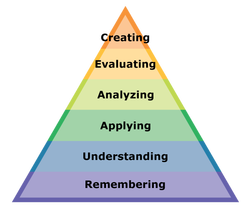
Information presented to customers must be capable of meeting near-instant information demands in a multitude of perspectives. This includes all end users, internal and external. Organizations will need to continue to be versatile and clever in their approach to data management.
Digital marketers are becoming quite clever in dealing with data, using it to persuade their (or their clients’) customers or potential customers. Taking principles from usability, marketers now use terms such as “user design”, “user experience” (UX) and “user interaction” (UI) and develop specialty roles to turn data into the most pleasant user experience possible. The food, beverage and hospitality industries aren’t the only ones in the experience this issue. Every industry is.
Build to Further Understand
Taxonomy and information architecture is not just about designing a great way to organize content for the end user. Taxonomy can also be used to understand data. Information, its structure and agility are keys to modern design techniques where such vast volumes of data exist.
Your organization can benefit from developing taxonomy for your organization’s information. Designing your information flow isn’t always as easy as it sounds. Consulting with a trusted professional that can analyze various aspects of your business is often needed to alleviate the stresses of a complex business taxonomy. A specialist can take your data and help you make sense of it. Whether you are a hospital that needs to define protocols for accessing patient data or a retail website seeking comprehensive analysis of information about web traffic, an internal audit of information systems can help to get you on the right track toward efficiency.
Start with assessing your digital (and even non-digital) tools to determine problem areas within the organization such as incomplete records or inconsistent rules or terms. The way in which systems communicate with customers, employees or other stakeholders is important to consider as well. Check that these systems can perform essential functions properly and that proper access and other rules are clearly defined. A master data management solution will help with this. Many fortune 1000 companies are going this route to deal with their organization’s information.
Agile Systems Will Assist in Achieving Maximum Comprehension
The right information asset management tools make all the difference. Having software for terms and concepts will provide users within the organization the right context for use. Thesaurus management, ontology software, metadata or cataloging software, auto-categorization, search, and other tools used in concert will keep the stability.
For example, in dealing appropriately with taxonomy, an agile system including auto-categorization and search tools (including text mining) would contain pre-installed user editable and non-editable taxonomies, be able to auto-generate editable taxonomies, support import of editable and non-editable taxonomies. To be agile for any number of end user type, these must be able to play out in several different varying combinations.
The same principle applies to other software categories like content management or thesaurus software. Search functions, for example, are more useful to the end user when they contain spell-checking functions or multiple display options. Remember, these principles apply to both the internal and external users. Remember that information architecture mastered on the inside will translate better to the outside.
Taxonomy and information architecture should be the foundation of an enterprise view of the customer. So how must an organization view its own vocabulary? Ensure that your master data management is interpreting terms consistently and includes context for those terms. Without context, people are often left searching for clues instead of getting the information they came for.
Maintaining Culture While Establishing Order
The above phrase sounds more like a political statement than one of taxonomy. However, when you think about it from a business perspective, it makes some sense. When you are implementing your agile system for taxonomy and information architecture, you don't want to disrupt the critical flow of business nor the information that is required to actually do business.
What you do want is to be able to open the pipeline of information further to increase productivity and enable efficient processes within the organization. That statement sums up the general need to implement an agile system for handling information.
Part of the solution to this is governance and compliance controls. By introducing hard controls for governance and compliance, you are forming a backbone with controls for how systems are using and integrating data. Your taxonomy, metadata and other information may connect business processes or even use content to complete or help complete a variety of tasks.
The exact structure of any organization varies from enterprise to enterprise and in parallel does their culture. This contrast can be reckoned with reason. The key to being able to harness information collectively, selectively and to varying degree is what will make the major difference in opening that pipeline up with controls in place to establish order.
Taxonomy Soup: Collaboration, Integration and Access
Here is analogy to social science: Just as the language of a region or culture may vary in dialect, so too does the language of business. The language of business can be quite diverse. Between industries, organizations, departments, fields of study/practice and a wide variety of other factors, confusion exists. The real benefit to a system with agility is the ability to communicate more efficiently. The combination of collaboration, integration, and access are the key ingredients to making the perfect taxonomy soup.
The ability to sort terms is very important and will become even more important in the big data era. A great system will be one that can differentiate taxonomy with due diligence. Collaborating will become more efficient this way.
By integrating data that does not fit into the dialect of terms, the organization will be able to make better use of its information assets, whatever they may be. This includes getting all of the information into the right places and ultimately into the right hands in the correct way. Policies and procedures are important examples of such data.
Analyze Your Needs Carefully
Take a look around your organization. Take notes on every detail you can to make an informed decision about what to implement and where. Consulting with a professional is the next step. The aforementioned details of creating an agile environment for taxonomy and information architecture within an enterprise of nearly any size are helpful in beginning to form a strategy for handling your enterprise information. Consulting a professional will help alleviate the overwhelming and burdensome task of data complexity.

 RSS Feed
RSS Feed
